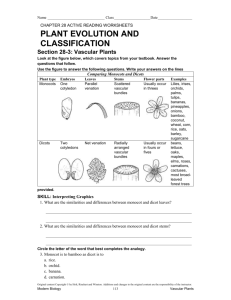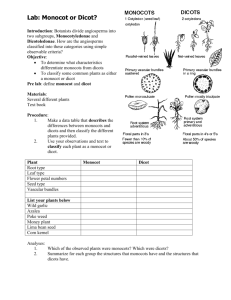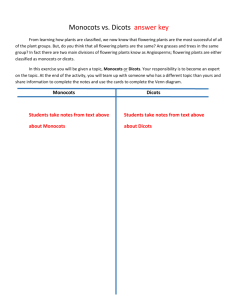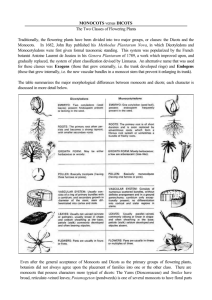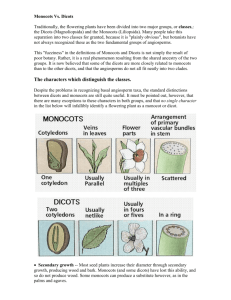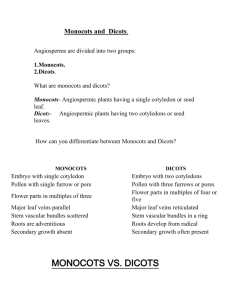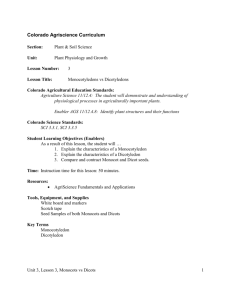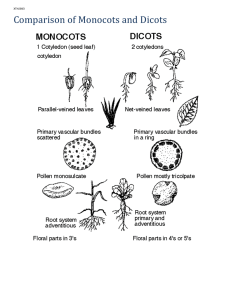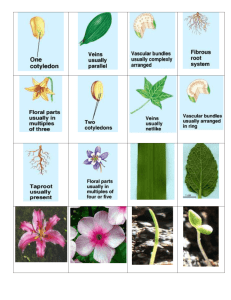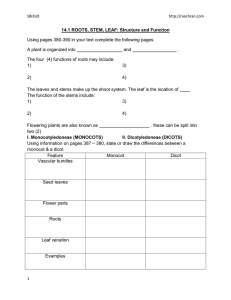“Monocot and Dicots”
advertisement
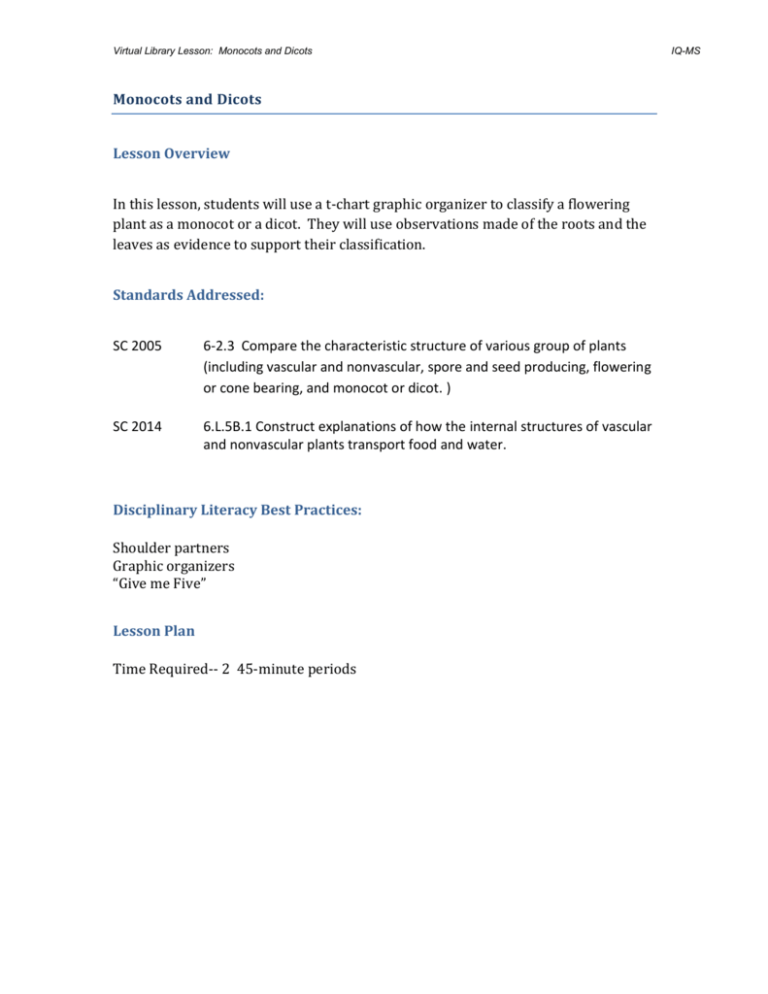
Virtual Library Lesson: Monocots and Dicots Monocots and Dicots Lesson Overview In this lesson, students will use a t-chart graphic organizer to classify a flowering plant as a monocot or a dicot. They will use observations made of the roots and the leaves as evidence to support their classification. Standards Addressed: SC 2005 6-2.3 Compare the characteristic structure of various group of plants (including vascular and nonvascular, spore and seed producing, flowering or cone bearing, and monocot or dicot. ) SC 2014 6.L.5B.1 Construct explanations of how the internal structures of vascular and nonvascular plants transport food and water. Disciplinary Literacy Best Practices: Shoulder partners Graphic organizers “Give me Five” Lesson Plan Time Required-- 2 45-minute periods IQ-MS Virtual Library Lesson: Monocots and Dicots Disciplinary Vocabulary: monocot, dicot, vascular, nonvascular, taproot, fibrous root Materials: o Assorted Plants (samples of grasses and samples of weeds) o Student Science Notebooks Assessment: Completed T-charts showing plant classification IQ-MS Virtual Library Lesson: Monocots and Dicots Engage o The teacher will explain to students that the last few days they have been comparing the structures of plant groups such as vascular and nonvascular, spore and seed producing, and flowering and cone bearing plants. o The students will use a concept web developed the previous day to write a statement of what they found the most interesting about plants. The teacher will use the “Give me Five” strategy to review. Explore o Pairs of students will be provided with two plants (grass and a weed) that have been pulled up by their roots. The students will be directed to make observations of the roots. As they are making their observations, the students will fill in a T chart in their science notebook comparing the roots. The teacher will guide the students as they classify each root as a taproot or a fibrous root. o After comparing the roots, the students will make observations in the T chart about the leaves of the two types of plants. The teacher will guide the students as they conclude that plant with the taproots and the wider leaves with a branching vein pattern are the dicots while those plants with the fibrous roots and the veins running parallel are indicative of monocots. Explain o Students will share their findings with the whole group and determine the characteristics of monocots and dicots. Teacher Reflections In a later lesson, the students will look at the flowers and the arrangement of the vascular bundles in both monocots and dicots. For an assessment, the students will be given a tulip to classify as monocot or dicot. They will have to validate using evidence about the leaves, flower, and roots. Lesson Author: Lindy Mckinney, 6th grade science teacher at Bell Street Middle School in Laurens School District 56 in Clinton, SC. IQ-MS
